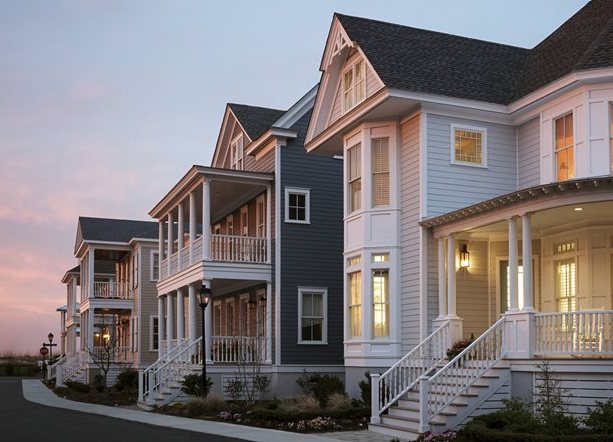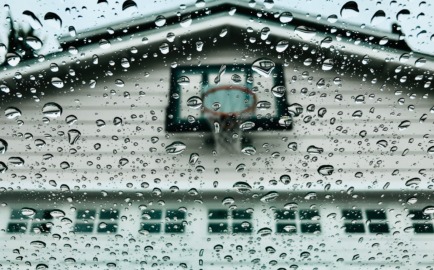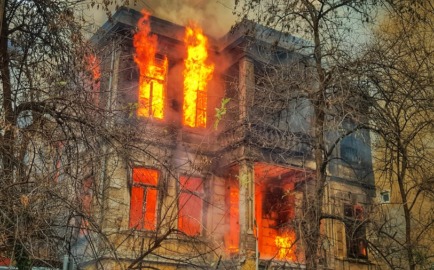
If your house was built more than 15 years ago, it’s not uncommon to start noticing signs of wear and tear around your exterior. Your siding, in particular, takes the brunt of the different weather extremes we experience here in Indiana and can start to look weathered over time. When you notice damage to your siding, you know it needs to be addressed sooner rather than later. But, how do you know if you need to schedule siding repairs or if it’s time to plan for a full replacement project?
Your friendly local team of experts at UHQ Construction is here to help. Continue reading this guide to learn the signs that you need repairs compared to the signs that you need a full replacement.
Signs That Siding Repairs Are Sufficient
The first step to deciding whether you need siding repairs or a full siding replacement is to take a look around your home to evaluate the state of your exterior. What you see will help you determine which course of action to take and what you need to talk to your siding contractor about when you schedule a full inspection.
The following signs of damage can typically be repaired, resulting in a less extensive (and expensive) project.
There Is Some Separation Between Only a Few Panels
If you have lap siding, during the installation process, there was caulking placed between each panel to help keep water out. Over time, however, this caulking can start to fail, making your home vulnerable to moisture damage if water gets beneath the siding.
As you’re inspecting your siding, you might notice a bit of separation between some of the panels where the caulk has failed. If there is only separation between a few panels, this is something that our team can repair for you. But, if you notice that most of the caulking is missing on your home’s exterior, a full replacement is probably a better option for your home.
If you ignore separated panels for too long, it’s only a matter of time before water works its way behind your siding, leading to potential structural damage.
There Are Small Areas of Rot
If you have wood siding, soffits, or fascia, the material is susceptible to rotting over time. As you’re looking over your siding, make note of any areas of rot. Generally speaking, as long as the rot is contained to a small area, we should be able to replace the affected area instead of recommending a full replacement.
But, if the rot is more extensive (which it may be once you look below the surface), it’s better not to risk further damage and instead replace all of your siding.
You Notice Some Cracked or Chipped Panels
After years of exposure to high winds, rain, snow, and sunlight, it’s not uncommon to notice that some of your panels are slightly damaged. Traditional lap siding, in particular, is susceptible to cracking and chipping over time.
In most cases, our team can remove and replace individual planks without needing to replace the whole section. If we have trouble finding a replacement material that matches the rest of your siding, there are a few options available to you.
We could replace it with a complementary color or style, almost like an accent design for your exterior. Or, we could remove some of your existing panels from a less visible section of your exterior to replace the damaged boards. Then, we can install a similar siding option in the less visible area.
Signs That You Need a Full Siding Replacement
When you examine your home’s siding, you might notice more extensive damage than what we covered above. In that case, you’ll almost always need to start planning for a full replacement project.
Here’s a closer look at some of the more serious types of siding damage that you might notice around your home.
Your Siding Looks Swollen
Just like swelling can be a sign that there’s something wrong with your body, it’s also a sign that there’s something wrong with your home’s exterior. Swollen siding happens when water gets trapped beneath your siding, as it has nowhere to go.
As the water continues to build up beneath your siding, it will expand, leading to a bowed look. Unfortunately, this is irreversible damage and it can only be remedied with a full siding replacement.
Keep in mind that water trapped beneath your siding can also lead to rot on your wood framing. The longer you wait to address the issue, the more dangerous it can be for your home’s structural integrity.
There Are Significant Areas of Rot
As we mentioned above, small amounts of rot can often be remedied. But, when you notice large areas of rot, it’s a sign that there is excess moisture trapped within your siding material. This happens with not only wood siding, but other types of siding, like masonite, as well.
Oftentimes, water builds up around the front and underside of your roof, causing significant damage. If you notice large areas of rot, call our team of siding experts out to your home to evaluate the full extent of the damage.
Then, during your replacement, you can opt for a more durable material like James Hardie siding, which isn’t susceptible to rot.
You Notice Signs of a Pest Infestation
Unfortunately, here in Indiana, we’re no strangers to pests and critters. That means it’s not uncommon to deal with an infestation in your home’s siding. Some of the most common pest infestations that our customers deal with include the following:
- Woodpeckers
- Bees
- Termites
- Carpenter ants
- Opossums
- Raccoons
It’s also not uncommon to notice birds building nests near your soffit. These pests can make their way behind your siding when it starts to degrade, so it’s a sign that it’s time to replace it. Beyond that, once they get inside, it’s only a matter of time before they damage your home’s exterior and maybe even your interior walls. Woodpeckers are probably the most damaging critter and will peck a hole into your home.
They can cause significant damage to your wooden frame, which means you’ll need a carpenter to come out and repair the damage.
At the first sign of a pest infestation, call in the help of a siding expert to help you come up with a replacement plan.
You See Signs of Major Damage
As we mentioned, small areas of siding damage can usually be repaired pretty easily. But, if you notice that the majority of your siding is cracked, rotting, chipped, or faded, then it’s time to start planning your replacement project.
Significant areas of damage are a sign that your siding as a whole is starting to fail and it’s inevitable that more serious issues that will start to develop if left alone. This can include damage to the wood framing and your interior walls, which will lead to more expensive repair costs.
You Notice Your Siding Looks Misshapen
As the weather changes outside, your siding will start to change with it. During cold weather, your siding contracts and it expands when it’s hot outside. This fluctuation can take a toll over time, putting pressure on the panels.
Eventually, the panels might start to look bowed or bent. When that happens, it leads to small cracks between the panels, making them vulnerable to damage. Not only can pests crawl inside these cracks, but water can also get inside, leading to damage beneath your siding.
At the first sight of bowed siding, call in the help of a professional to evaluate the extent of the damage and start planning your replacement project.
Types of Siding to Consider for Your Replacement
If you notice any of the signs that indicate you need a full replacement, you’ll need to consider which siding material makes the most sense for your home. Here at UHQ Construction, we proudly offer two of the top siding brands on the market: James Hardie fiber cement siding and Mastic vinyl siding.
James Hardie Fiber Cement Siding
Known for its superior durability, James Hardie siding is designed to withstand our various weather extremes, looking great for decades. It comes in a variety of different styles and color options so you can create a beautiful curb appeal for your home.
The UHQ Construction team is proud to be a James Hardie Elite Preferred Contractor, which means we’re uniquely trained to install James Hardie products according to manufacturer standards, which protects your 30-year warranty.
Mastic Vinyl Siding
Another popular option with local homeowners, Mastic vinyl siding performs well in extreme heat, winds, and rain so you don’t have to worry about issues that plague other siding materials.
Mastic vinyl siding also comes in a variety of different design options to match your desired aesthetic.
Here for All Your Siding Needs
Whether you need to schedule siding repairs or it’s time to start planning a full replacement, the UHQ Construction team is here for you. We’d be more than happy to answer any siding questions you have, inspect the state of your current siding, and walk you through the different options available to you.
When you’re ready to get started, request a free estimate from our team.




